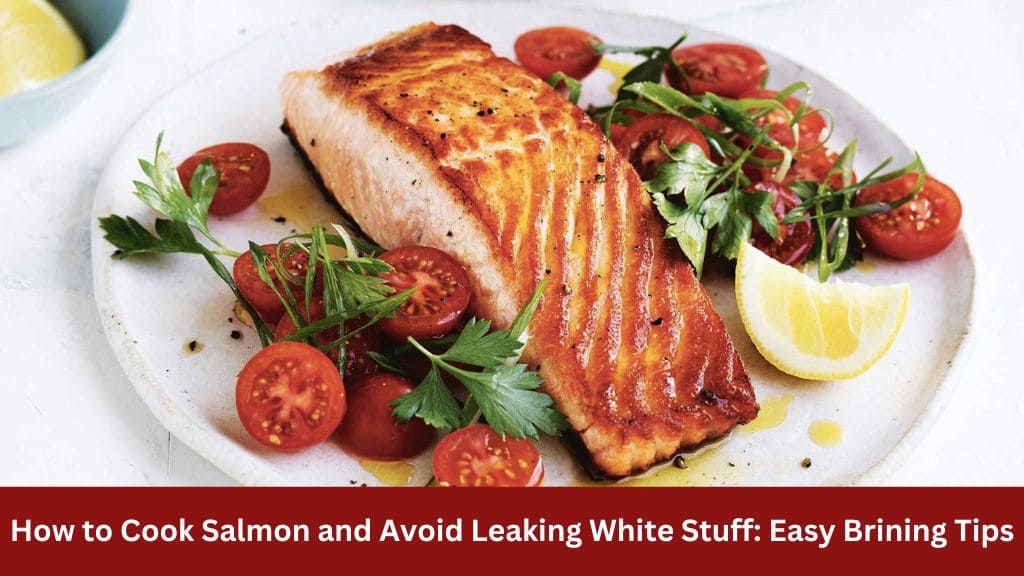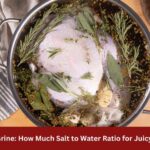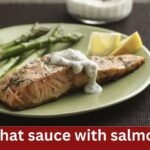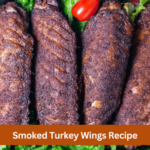Cooking salmon perfectly can be a culinary delight, but there’s nothing more disappointing than seeing that unsightly white stuff oozing out of your beautifully cooked fish. This white substance, known as albumin, is harmless but can be off-putting. In this comprehensive guide, we will explore the reasons behind the appearance of albumin and provide a foolproof method to cook salmon without it leaking. Let’s dive into the details!
Understanding Albumin: What Is the White Stuff?
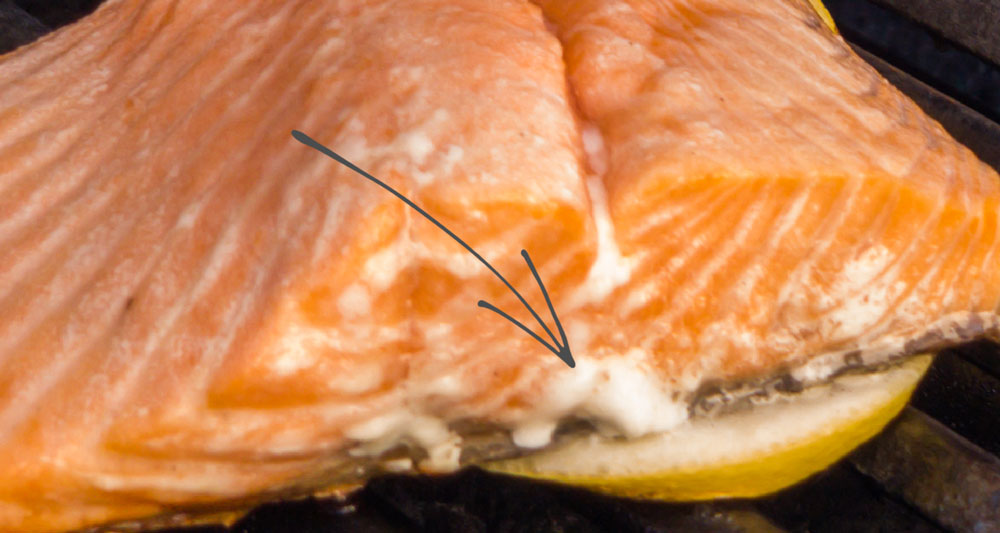
Albumin is a protein found in salmon and other fish. When salmon is cooked, the muscle fibers contract, pushing out the albumin from the flesh to the surface. Here’s a closer look at what happens:
- Protein Reaction: Albumin is originally liquid within the fish, but heat causes it to coagulate and turn semi-solid, appearing as the white substance.
- Harmless but Unattractive: While albumin is perfectly safe to eat, it can make the salmon look less appetizing.
Why Does Albumin Appear?
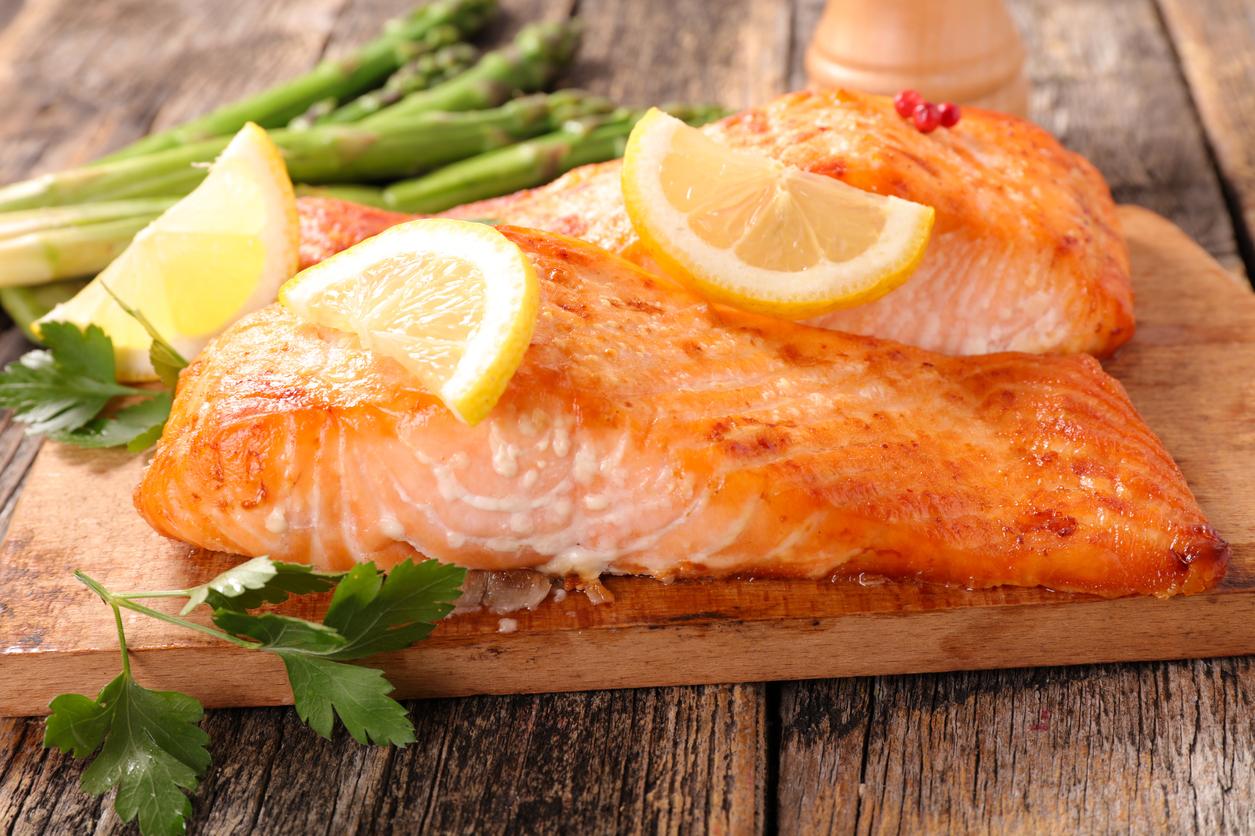
Several factors contribute to the appearance of albumin during the cooking process:
- High Heat: Cooking salmon at too high a temperature can shock the fish, causing the proteins to contract rapidly and push albumin to the surface.
- Cold Start: Cooking salmon straight from the refrigerator can cause uneven cooking and more albumin release.
- Lack of Preparation: Not preparing the salmon properly before cooking can also lead to albumin leakage.
Choosing the Right Salmon

Different types of salmon have varying fat contents and flavors, which can affect the cooking process and the appearance of albumin. Here’s a breakdown of common types of salmon:
Pacific Salmon
- King Salmon (Chinook): Highest in fat, known for its rich texture and flavor. Best for a luxurious dish.
- Sockeye Salmon: Leaner, with a robust flavor and bright red flesh. Great for bold, flavorful recipes.
- Coho Salmon: Medium fat content with a subtle flavor. Ideal for whole fish preparations.
- Steelhead Salmon: Similar to rainbow trout, often more affordable. Mild flavor and good for various recipes.
Atlantic Salmon
Farmed Atlantic Salmon: Widely available, mild in flavor, and generally more affordable. Wild Atlantic salmon is not commercially available.
Nutritional Benefits
Salmon is not only delicious but also packed with nutrients:
- Omega-3 Fatty Acids: Essential for heart health.
- Vitamin B: Important for energy production.
- Potassium: Helps regulate blood pressure.
Ingredients for Perfect Salmon
:max_bytes(150000):strip_icc()/pan-seared-salmon-recipe-5498576-hero-01-ba14de427f064aacb8763704cd5d56bd.jpg)
Preparing salmon without albumin leakage requires just a few simple ingredients:
- Salmon Filets
- Cold Water
- Butter
- Salt and Pepper
The Secret: Brining the Salmon

Brining is the key to preventing albumin from appearing on your cooked salmon. Here’s a step-by-step guide to brining your salmon
Ingredients:
-
- 8-10 cups of cold water
- 3 tablespoons of kosher salt
Brining Process
- Prepare the Brine: In a large pot, mix the cold water with the kosher salt, stirring until the salt is completely dissolved.
- Submerge the Salmon: Place the salmon filets in the brine, ensuring they are fully submerged. If needed, add more water to cover the filets.
- Brining Time: Let the salmon sit in the brine for at least 1 hour. For optimal results, brine for up to 2 hours. If brining for longer than 30 minutes, place the pot in the refrigerator.
Tips for Brining
- Do Not Over-Brine: Avoid brining for more than 2 hours to prevent the salmon from becoming too salty.
- Room Temperature: Allow the brined salmon to come to room temperature before cooking to ensure even cooking.
Cooking the Salmon: Step-by-Step Guide
Once your salmon is properly brined, it’s time to cook it. Follow these steps for perfectly cooked salmon without the white stuff:
Preparation
- Pat Dry: Remove the salmon from the brine and pat it dry with paper towels. This step is crucial for achieving a good sear.
- Season: Lightly season the salmon with salt and pepper on the non-skin side.
Cooking Method
- Cold Pan Start: Place the salmon filets skin-side down in a cold, non-stick pan. Starting with a cold pan helps prevent the albumin from oozing out.
- Heat Gradually: Turn the heat to medium and let the salmon cook undisturbed. This gradual heating process allows the salmon to cook evenly.
- Cook Until Partially Done: Cook the salmon until it turns pink about ⅓ of the way up from the bottom (approximately 6-8 minutes).
- Flip the Salmon: Carefully flip the salmon filets so the skin side is now up. If you prefer, you can remove the skin at this point.
- Add Butter: Add 2 tablespoons of unsalted butter to the pan. This will help baste the salmon and keep it moist.
- Continue Cooking: Cook for another 5 minutes or until the salmon reaches an internal temperature of 120°F. Use a meat thermometer for accuracy.
- Rest: Remove the salmon from the pan and let it rest for a few minutes before serving.
Serving Suggestions
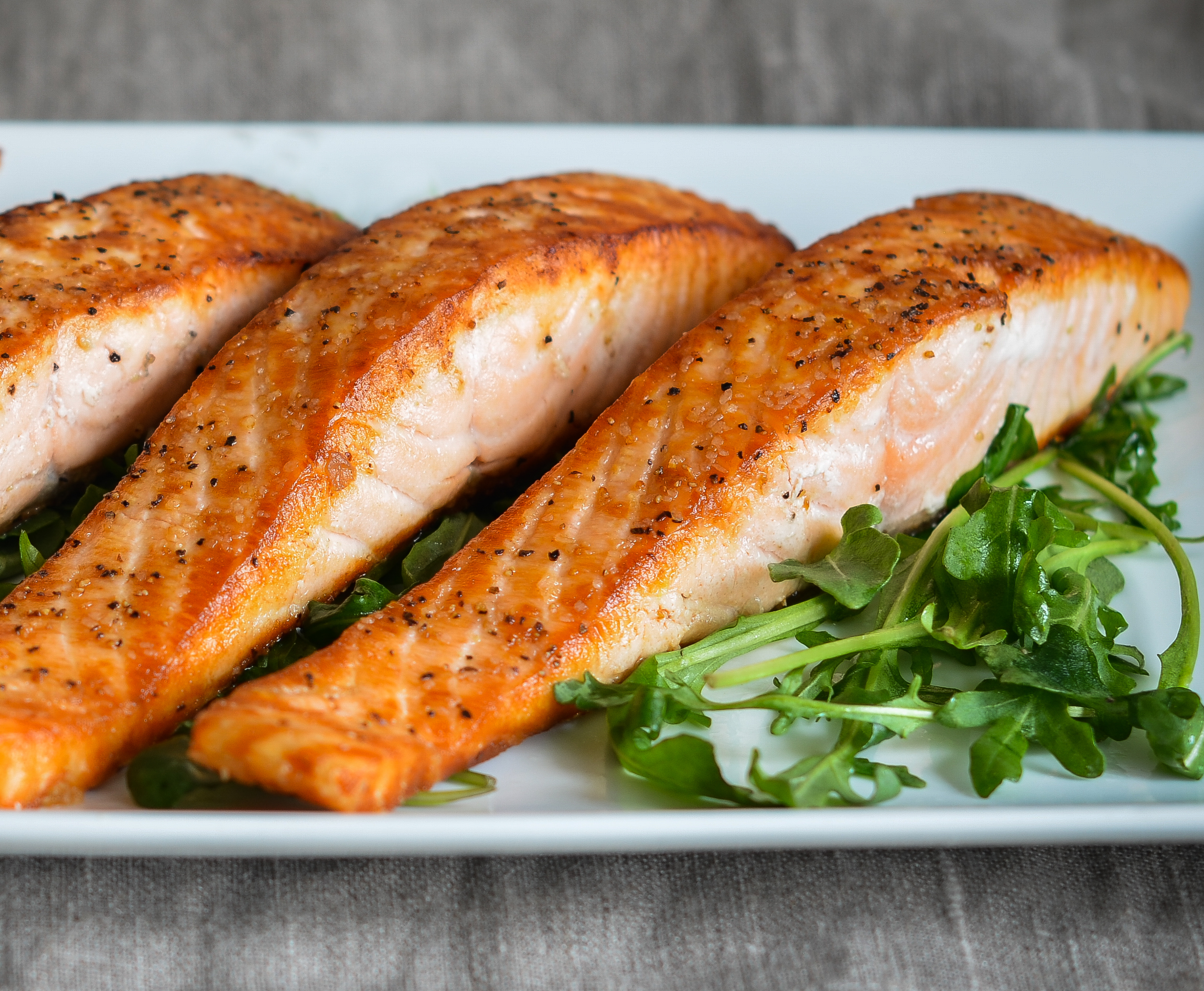
Perfectly cooked salmon pairs well with a variety of sides and salads. Here are a few ideas:
- Easy Asian Cucumber Salad: A refreshing side with a tangy dressing.
- Israeli Couscous Salad: A hearty, grain-based salad with vegetables and herbs.
- Kale Fennel Dried Fig Salad: A nutritious and flavorful salad with a hint of sweetness.
- Kale Quinoa Salad: Packed with protein and nutrients, perfect for a balanced meal.
- Cold Soba Noodle Salad: Light and refreshing, with a touch of Asian flavors.
Frequently Asked Questions

Can I Eat the White Stuff on Salmon?
Yes, albumin is perfectly safe to eat. It’s a natural protein released during cooking.
Can I Use Frozen Salmon?
Absolutely! If using frozen salmon, ensure it is fully thawed in the brine before cooking.
Should You Bring Salmon to Room Temperature Before Cooking?
Yes, it’s best to let the brined salmon sit at room temperature for about 15-20 minutes before cooking to ensure even cooking.
How Long Can You Brine Salmon?
Brine the salmon for at least 1 hour and up to 2 hours for optimal results. Avoid brining for more than 2 hours to prevent the salmon from becoming too salty.
Do You Rinse Salmon After Brining?
No need to rinse. Simply pat the salmon dry with a paper towel before cooking.
Can You Brine Salmon at Room Temperature?
If brining for longer than 30 minutes, it’s safest to brine in the refrigerator and then bring to room temperature before cooking.
Other Delicious Fish Dishes

If you enjoyed this salmon recipe, try these other fish dishes:
- Seared Ahi Tuna Tacos: Quick and flavorful, perfect for a weeknight dinner.
- Easy Grilled Swordfish Tacos: A great alternative to traditional tacos.
- Fried Tilapia Tacos: Crispy and delicious, with a touch of spice.
- Roasted Garlic Salmon: Another salmon recipe with a robust garlic flavor.
- Blackened Ahi Tuna: Spicy and savory, with a perfectly seared crust.
- Dairy-Free Lemon & Shrimp Risotto: Creamy and rich without any dairy.
Conclusion
Cooking salmon without the unsightly white stuff is easy with the right technique. Brining the salmon before cooking is the key to preventing albumin from leaking out, ensuring a beautifully cooked, tender, and juicy filet. With this foolproof method, you’ll be able to impress your family and friends with perfectly cooked salmon every time. Enjoy your culinary journey with salmon and explore the various sides and dishes that complement this delicious fish. Happy cooking!

